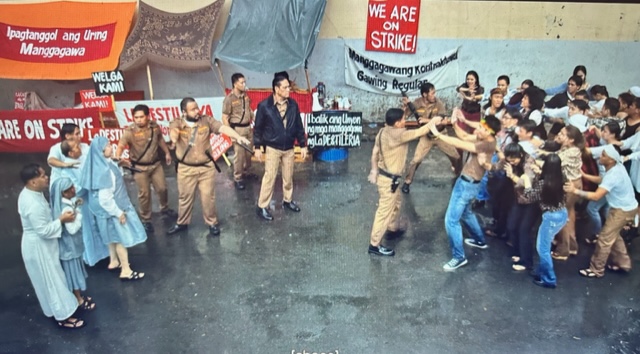
By Lui Queano
‘Katips,’ written and directed by Atty. Vince Tanada, gave credence to the youth uprising of the 1970s against dictator Ferdinand Marcos Sr. Among young people who are against the current Marcos Jr. regime, which many consider to have cheated in the last presidential election, the film has gained popularity.
As the best way to describe the years of martial law, the film takes viewers back to those times. The “youth power” era saw protesters opposing the Marcos government take to the streets on a near-daily basis. At a time when the Philippines was experiencing its worst economic and political crises, a new generation of Filipinos became increasingly politically engaged. This film was made to dispel the myth that the time of the Marcos dictatorship was a golden age in the country’s history.
During martial law, the film’s young protagonists went into hiding as leaders and activists to fight the dictatorship. Torture scenes, in which student leaders and activists defied the state and faced their fears while being physically tortured by military agents, were the most gripping parts of the film. A young student activist is tortured in one scene, soldiers attack workers on the picket line, a case of enforced disappearances, kidnappings, and murders of activists, and a picture of the fate of a nation under siege all keep viewers glued to their seats for the entire more than two-hour runtime.

‘Class love’ describes a relationship between two activists who put their feelings for one another aside to fight for freedom and justice for the people. The significance of taking on a larger nationalist mission is a major theme of the film. The music is gorgeously written, with a melodic line that further dramatizes the longing for love of country and the longing for love thwarted by a society experiencing repression and defiance of martial rule.

pointed a gun at her while fighting with workers at a picket line.
(Image from the film Katips)
The film’s message suggests that “Katips” stands for the new revolutionary generation or, in Marxist terms, the contemporary proletariat. But by then, the movie might already have a resurrected soul, with the intention of fighting for the revolution on behalf of the people, so that they can be free from all reactions, whether those reactions are directed toward a fascist dictator or towards its imperialist master. The film can be viewed in one of two ways: either as a warning about the dangers of letting false information spread unchecked, or as a call to action to fight back against the spread of such misinformation. Ultimately, the fate of a country whose citizens yearn for freedom and democracy rests on the shoulders of the next generation and their willingness to accept the challenge and fight for that future.
“Katips” premiered in Canada from November 30 to December 10, coinciding with the International Day for the Protection of Human Rights. The tour visits several Canadian cities, including Edmonton, Winnipeg, Calgary, British Columbia, Ottawa, Montreal, and Toronto.
